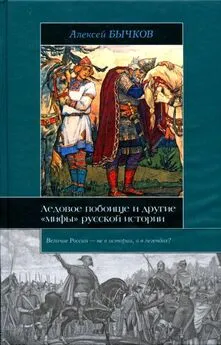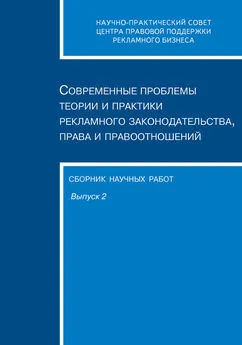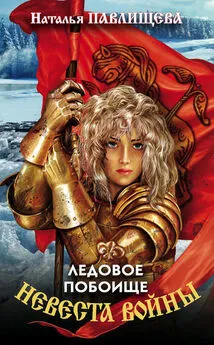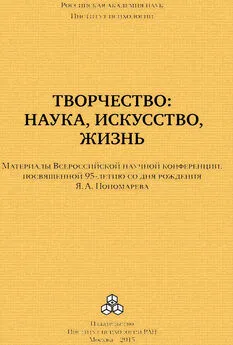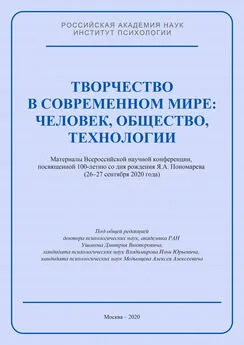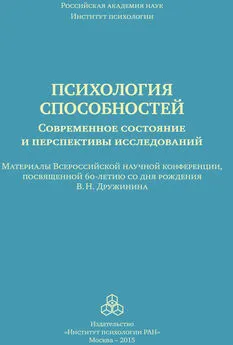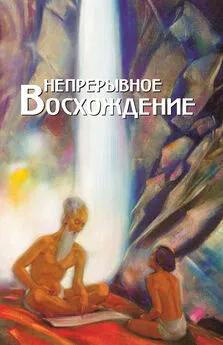Денис Хрусталёв - Ледовое побоище в зеркале эпохи [Сборник научных работ, посвященный 770-летию битвы на Чудском озере]
- Название:Ледовое побоище в зеркале эпохи [Сборник научных работ, посвященный 770-летию битвы на Чудском озере]
- Автор:
- Жанр:
- Издательство:Липецкий государственный педагогический университет
- Год:2013
- Город:Липецк
- ISBN:978-5-88526-636-9
- Рейтинг:
- Избранное:Добавить в избранное
-
Отзывы:
-
Ваша оценка:
Денис Хрусталёв - Ледовое побоище в зеркале эпохи [Сборник научных работ, посвященный 770-летию битвы на Чудском озере] краткое содержание
Ледовое побоище в зеркале эпохи [Сборник научных работ, посвященный 770-летию битвы на Чудском озере] - читать онлайн бесплатно ознакомительный отрывок
Интервал:
Закладка:
177. Jemen C.S. How to Convert a Landscape: Henry of Livonia and the Chronicon Livoniae // The clash of cultures on the medieval Baltic frontier. Farnham [a. o.], 2009. P. 151–168.
178. Jóżwiak S. Specjalni wysłannicy Wielkich Mistrzów do Prus i Inflant. Przyczynek do funkcjonowania centralnych organów władzy Zakonu Krzyżackiego w połowie XIII wieku // Roczniki Humanistzcyne. 2000. T. 48. Z. 2. S. 191–203.
179. Kala T. The Incorporation of the Northern Baltic Lands into the Western Christian World // Crusade and Conversion on the Baltic Frontier 1150–1500. Aldershot [u. a.], 2001. S. 3–20.
180. Kala T. Über das Schicksal des Bistums Ösel-Wiek // Saare-Lääne piiskopkond: Artiklid Lääne-Eesti keskajast. Haapsalu, 2004, S. 177–208.
181. Kivimäe J. Hansa. Tallinn, 1994.
182. Kivimäe J. Medieval Narva: Featuring a Small Town between East and West // Narva und die Ostseeregion. Beiträge der II. Internationalen Konferenz über die politischen und kulturellen Beziehungen zwischen Russland und der Ostseeregion (Narva, 1.–3. Mai 2003). Narva, 2004. S. 17–28.
183. Klavinš K. The Significance of the Local Baltic Peoples in the Defence of Livonia (Late Thirteenth-Sixteenth Centuries) // The clash of cultures on the medieval Baltic frontier. Farnham [a.], 2009. P. 321–340.
184. Kloczowski J. The Christianization of the Baltic Region against the Background of the Medieval Christianization of Europe // Christianization of the Baltic Region. Christianization of the Baltic region. Pułtusk, 2004. S. 9–20.
185. Korpela J. «The Russian Threat Against Finland» in the Western Sources before the Peace of Nöteborg (1323) // Scandinavian Journal of History 22 1997. P. 161–172.
186. Kreem J. Der Deutsche Orden in Livland und die Heiden: Landvolk und Undеutsche in der livländischen Heeresverfassung // L'Ordine Teutonico tra Mediterraneo e Baltico. Incontri e scontri tra religioni, popoli e culture. Galatina, 2008. S. 237–245.
187. Kreem J. Der Deutsche Orden und das mittelalterliche Livland: Perspektiven der Historiographie // Die Kontinuität der hansischen Dimension im baltischen Raum. Hamburg, 2008.
188. Kreem J. The Teutonic Order in Livonia: Diverging Historiographic Traditions // The Crusades and the Military Orders Expanding the Frontiers of Medieval Latin Christianity. «In memoriam» Sir Steven Runciman (1903–2000). Budapest, 200l. S. 467–480.
189. Krötzl C. Finnen, Liven, Russen. Zur päpstlichen Politik im nördlichen Ostseeraum im 12. und 13. Jahrhundert // Ab Aquilone. Nordic Studies in Honour and Memory of Leonard E. Boyle. Stockholm, 1999. S. 44–56.
190. Kwiatkowski S. Quellen zur Geschichte des Deutschen Ordens in Preussen, im Reich und in Livland // Stan badań i potrzeby edycji źródłowych dla historii Pomorza i innych krajów południowej strefy bałtyckiej. Toruń, 1995. S. 9–29.
191. Latvijas viduslaiku pilis [Средневековые замки Латвии]. 5 t. Rīga 1999–2005.
192. Lind J.H. Collaboration and confrontation between East and West on the Baltic Rima s a result of the Baltic Crusades // Die Ostseeraum und Kontinentaleuropa 1100–1600. Schwerin, 2004. S. 123–126.
193. Lind J.H. Scandinavian Nemtsy and Repaganized Russians. The Expansion of the Latin West During the Baltic Crusades and its Confessional Repercussions // The Crusades and the Military Orders Expanding the Frontiers of Medieval Latin Christianity. «In memoriam» Sir Steven Runciman (1903–2000). Budapest, 2001, S. 481–500.
194. Lind J.H. The Order of the Sword-Brothers and Finland. Soures and traditions // Vergangenheit und Gegenwart der Ritterorden (Ordines militares — Colloquia Torunensia historia XI). Toruń, 2001. S. 159–164.
195. Lindkvist T. Christianisation and State-Bilding in the Baltic Sea Area // Die Ostseeraum und Kontinentaleuropa 1100–1600. Schwerin, 2004. S. 127–130.
196. Lindquist S.-O. Manifestations of the Gotlanders's Strategies in their Relations to the Crown and the Church in the Early Medieval period // Die Ostseeraum und Kontinentaleuropa 1100–1600. Schwerin, 2004. S. 113–118.
197. Livonia // La Commanderie, institution des ordres militaires dans l'Occident medieval. Paris, 2002. S. 219–242.
198. Lübeck style? — Novgorod style?: Baltic Rim central places as arenas for cultural encounters and Urbanisation 1100–1400 AD. Riga [a. o.], 2001.
199. Mäesalu A. Archäologische Erkenntnisse zum Handel in Tartu (Dorpat) vom 12. bis zum 17. Jahrhundert // Lübecker Kolloquium zur Stadtarchäologie im Hanseraum, II: Der Handel. Lübeck 1999, S. 427–434.
200. Mäesalu M. Päpstlihe Gewalt im Kreuzzugsgebiet: Gründete Wilhelm von Modena in Estland einen «Pufferstaat»? // Forschungen zur baltischen Geschichte. Bd. 6. Tartu, 2011. S. 11–30.
201. Mägi M. At the crossroads of space and time: graves, changing society and ideology on Saaremaa (Ösel), 9 th–13 th centuries AD. Tallinn, 2002.
202. Matusowa V.I. Zur Rezeption des Deutschen Ordens in Rußland // Vergangenheit und Gegenwart der Ritterorden (Ordines militares. Colloquia Torunensia historica XI). Toruń, 2001. S. 133–143.
203. Mažeika R. Of Cabbages and Knights: Trade an Trade Treaties with the Infidel on the Northern Frontier, 1200–1390 // Journal of Medieval History. 1994. Bd. 20. S. 63–76.
204. Mikulski K. Geneza i rozwój ławniczych sądów ziemskich w państwie krzyżackim w XIII–XV wieku // Prusy i Inflanty między średniowieczem a nowożytnośią: Państwo — społeczeństwo — kultura. Toruń, 2003. S. 45–62.
205. Militzer K. Die Aufnahme von Ritterbrüder in den Ritterorden. Ausbildungsstand und Aufnahmevoraussetzungen // Das Kriegswesen der Ritterorden im Mittelalter (Ordines Militares — Colloquia Torunensia historica VI). Toruń, 1991. S. 7–12.
206. Militzer K. Die Geschichte des Deutschen Ordens. Stuttgart, 2005.
207. Misāns I. «Wir waren immer ein Kriegervolk». Die Darstellung der ostbaltischen Kreuzzüge in der lettischen Geschichtsschreibung // Lippe und Livland. Mittelalterliche Herrschaftsbildung im Zeichen der Rose. Bielefeld, 2008. S. 185–207.
208. Misāns I. Alt-Livland und die Hanse // Die baltischen Staaten im Schnittpunkt der Entwicklungen. Vergangenheit und Gegenwart. Basel, 2002. S. 35–45.
209. Misāns I. Integration durch den Handel: Die Einheit des Ostseeraumes zur Hansezeit (12./13.–15. Jahrhundert) // Saeculum. 2005. Bd. 56. S. 227–239.
210. Mugurevičs Ē. Archäologische Zeugnisse der Entwicklung der Bauart der livländischen Ordensburgen im Territorium Lettlands // Senās apmеtnes Latvijās teritorija. Riga, 1994. S. 108–109.
211. Mugurevičs Ē. Die Verbreitung des Christentums in Lettland vom 11. Jahrhundert bis zum Anfang des 13. Jahrhunderts // Rom und Byzanz im Norden. Teil 2: Mission und Glaubenswechsel im Ostseeraum während des 8.–14. Jahrhunderts. Stuttgart, 1998. S. 81–96.
212. Mühlen H. v. zur. Zur Frühgeschichte der Revaler Gilden // Reval. Handel und Wandel vom 13. bis zum 20. Jahrhundert, Lüneburg, 1997. S. 15–42.
213. Mühlen H., von zur. Livland von der Christianisierung bis zum Ende seiner Selbstständigkeit (etwa 1180–1561) // Deutsche Geschichte im Osten Europas. Baltische Länder. Berlin, 1994. S. 25–172.
214. Mund S. Travel Accounts as Early Sources of Knowledge about Russia in Medieval Western Europe from the mid-Thirteenth to the early Fifteenth Centuries // The Medieval History Journal. 2002. Vol. 5, № 1. P. 103–120.
215. Munzinger M.R. The Profits of the Cross: Merchant Involvement in the Baltic Crusade (c. 1180–1230) // Journal of Medieval History. 2006. Vol. 32. T. 2. S. 163–185.
216. Murray A.V. Music and Cultural Conflict in the Christianization of Livonia, 1190–1290 // The clash of cultures on the medieval Baltic frontier. Farnham [a. o.], 2009. P. 293–306.
217. Nielsen T.K. Monsters? Russians and the Orthodox Church in the Chronicle of Henry of Livonia // The clash of cultures on the medieval Baltic frontier. Farnham [a. o.], 2009. P. 227–252.
218. Nielsen T.K. The Missionary Man: Archbishop Anders Sunesen and the Baltic Crusade, 1206–21 // Crusade and Conversion on the Baltic Frontier 1150–1500. Aldershot [a. o.], 2001, S. 95–117.
219. Nolte H.-H. Die Eroberung des Baltikums durch Deutsche Herren im 13. Jahrhundert in globalgeschichtlicher Perspektive // Deutschland, Russland und das Baltikum. Beiträge zu einer Geschichte wechselvoller Beziehungen. Festschrift zum 85. Geburtstag von Peter Krupnikow. Köln. Weimar, Wien, 2005. S. 19–34.
220. Nordosteuropa als Geschichtsregion: Beiträge des III. Internationalen Symposiums zur deutschen Kultur und Geschichte im Europäischen Nordosten. Helsinki [u. a.], 2006.
221. Novgorod — Markt und Kontor der Hanse. Hrsg. K. Friedland. Köln, 2002.
222. Novgorod: Das mittelalterische Zentrum und sein Umland im Norden Russland. 2001.
223. Palmer A. Northern Shores — A History of the Baltic Sea and its Peoples. London, 2005.
224. Pärn A. Die Städtegründungen in Estland — Eine Analyse der Einflüsse auf die Siedlungsentwicklung // The European Frontier. Clashes and Compromises in the Middele Ages. Lund, 2004. S. 259–282.
225. Pickhan G. Gospodin Pskow: Entstehung und Entwicklung eines städtischen Herrschaftszentrums in Altrußland. Berlin, 1992.
226. Pistohlkors G., von. Die Stellung der Deutschen in der Geschichte der Esten, Letten und Litauer // Die Deutschen in der Geschichte des nördlichen Ostmitteleuropa. Bestandsaufnahmen. Lünebug, 1992. S. 89–122.
227. Preußen und Livland // Militärgeschichtliche Zeitschrift. 2006. Bd. 65. S. 113–129.
228. Radzmiński A. Władztwa kościelne w Prusach i Inflantach. Studium porównawcze // Prusy i Inflanty między średniowieczem a nowożytnośią: Państwo — społeczeństwo — kultura. Toruń, 2003. S. 17–28.
229. Raudkivi P. Der Weg von Akkon nach Wien über Livland // Hansische Geschichtsblätter. 1996. Bd. 114. S. 300.
230. Raudkivi P. Historia zakonu inflanckiego jako część historii Łotwy i Estonii (XIII w. — 1. Połowa VI w.) // Ekspansja niemieckich zakonów rycerskich w strefie Bałtyku od XIII do połowy XVI wieku. Toruń, 1990. S. 85–92.
231. Riga und der Ostseeraum: Von der Gründung 1201 bis in die Frühe Neuzeit. Marburg, 2005.
232. Riley S.J. The State of Mind of Crusaders to the East. Oxford, 2001.
233. Ritterbrüder im livländischen Zweig des Deutschen Ordens. Köln, 1993.
234. Sarnowsky J. Der Deutsche Orden. München, 2007.
235. Schmidt C. Das Bild der Rutheni bei Heinrich von Lettland // ZfO. Bd. 44. H. 4. 1995. S. 509–520.
236. Schneider R. Riga im Mittelalter. Eine Kaufmannsstadt im Schnittpunkt verschiedener Kulturen // Grenzkultur — Mischkultur? Saarbrücken, 2000. S. 189–207.
237. Selart A. Balduin von Alna, Dänemark und Rußland. Zur politischen Geschichte Livlands in den 1230er Jahren // The Reception of Medieval Europe in the Baltic Sea Region. Papers of the XIIth Visby Symposium held at Gotland University, Visby. Visby, 2009. S. 59–74.
238. Selart A. Der «Dorpater Zins» und die Dorpat-Pleskauer Beziehungen im Mittelalter // Aus der Geschihte Alt-Livlands. Festschrift für Heinz von zur Mühlen zum 90. Geburtstag. Münster, 2004. S. 11–38.
Читать дальшеИнтервал:
Закладка:
![Обложка книги Денис Хрусталёв - Ледовое побоище в зеркале эпохи [Сборник научных работ, посвященный 770-летию битвы на Чудском озере]](/books/1062589/denis-hrustalev-ledovoe-poboiche-v-zerkale-epohi-sbornik-nauchnyh-rabot-posvyachennyj-770-letiyu-bitvy-na-chudskom-ozere.webp)
